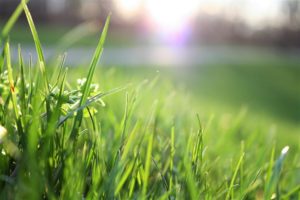
Here are some lawn care tips to deal with red thread and get rid of it.
Diseases can affect your lawn when you least expect it. You might have a fungus on your lawn and not know how to recognize or treat it. Red thread disease might have taken root during the fall, but you were too busy with holiday event preparations to notice that something was wrong. Here are some lawn care tips to deal with red thread and get rid of it.
Look for Telltale Signs of Red Thread Disease
Let’s begin by discussing some of the symptoms you can expect to see. If the bottoms of your shoes start to turn a bizarre reddish-pink color, then that is the first sign. These threads are going to be spread out throughout your lawn. The longer the red threat is allowed to flourish, the more your grass will wither.
Inspect the Infection Level to Better Detect Red Thread Disease
Spring can be cool and wet, which is why the red thread threat is more likely to occur during that time of year. However, although we associate winter with being cold and dry, this problem can crop up during the late fall and early winter as well. The winter solstice was just a few days ago, after all. Oversaturated grass can exacerbate this issue. Soil compaction and thatch growth can also make it worse. Part of observing proper lawn care involves making sure that the grass gets enough air. That’s why implementing various aeration techniques are so helpful. Shade, humidity, and wet grass can be problematic as well. Under these conditions, the red thread fungus can survive and spread the infection. Keep an eye on what is going on beneath your foot. It’s normal to feel overwhelmed whenever you see something affecting your lawn. That said, you know you can trust lawn care professionals to help you repel this threat to your carefully-cultivated landscape.
Take Action to Contain Red Thread Disease
Whenever you mow the lawn, pick up the clippings as soon as you can. Although the grass is dormant during the winter, that doesn’t mean you can ignore the necessary maintenance. Think of cutting the grass like getting a haircut. It’s still required, especially if your hair is beginning to look unruly again. Fertilizers loaded with high nitrogen content can make a dramatic difference. As we mentioned above, aeration can also. Consider using fungicides as a last resort. However, since they are so potent, many of the available fungicides are only accessible by lawn care professionals.
Have More Questions? Stay in Touch!
Order early, and order often to ensure the best service possible. Contact us through our online page. Find us at 27616 Little Lane, Salisbury, Maryland 21801. Our phone number is 410-726-6103, and our fax number is 410-742-6550. Speak to Jason Anderson for Turf Grass Sales. Reach him by email at jason@quanticocreeksod.com. Finally, follow us on social media on Facebook, LinkedIn, and our blog!
